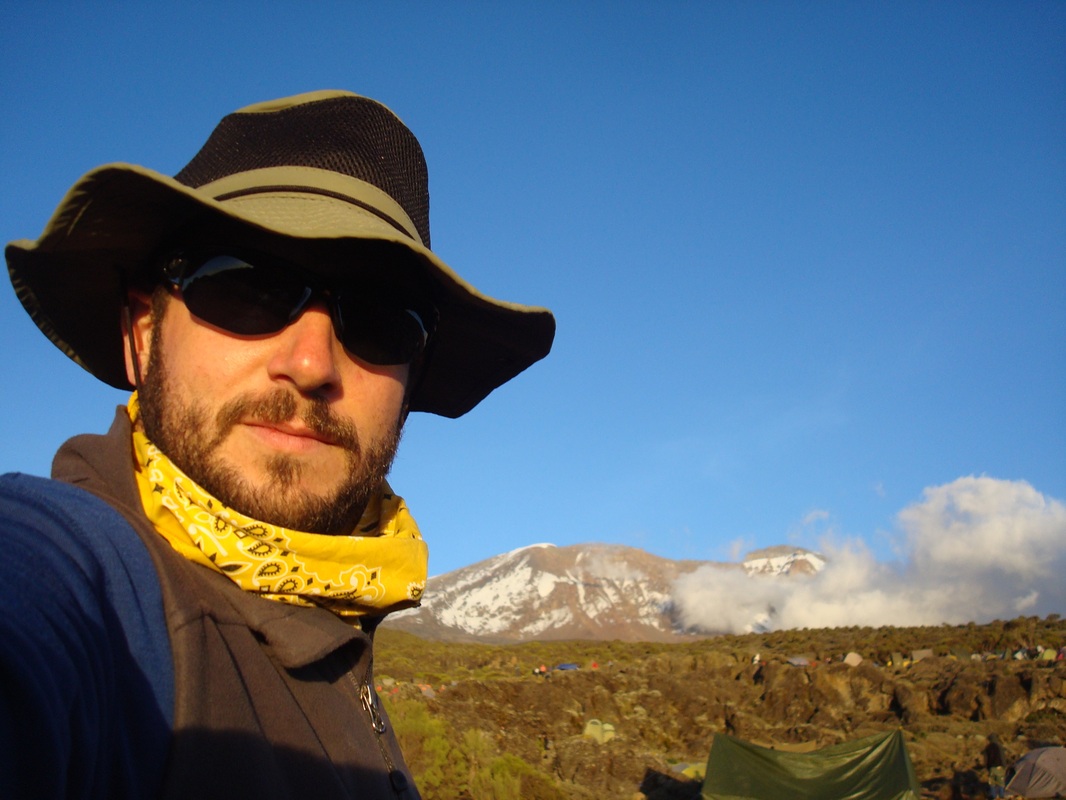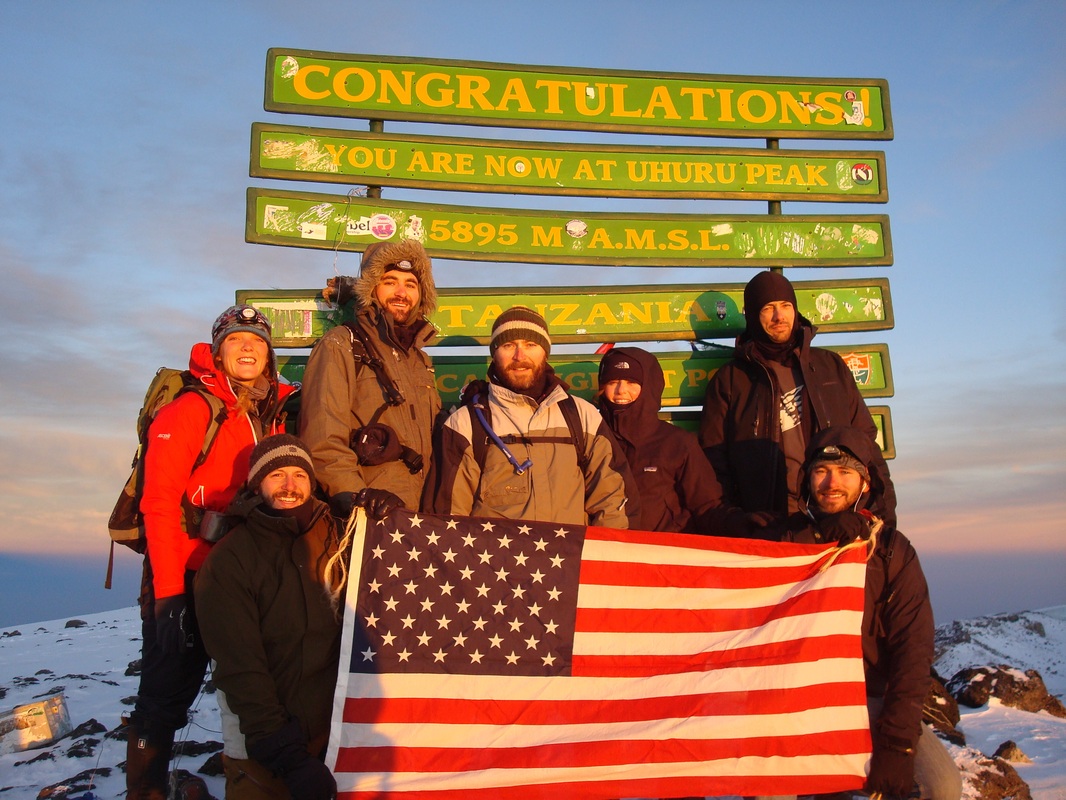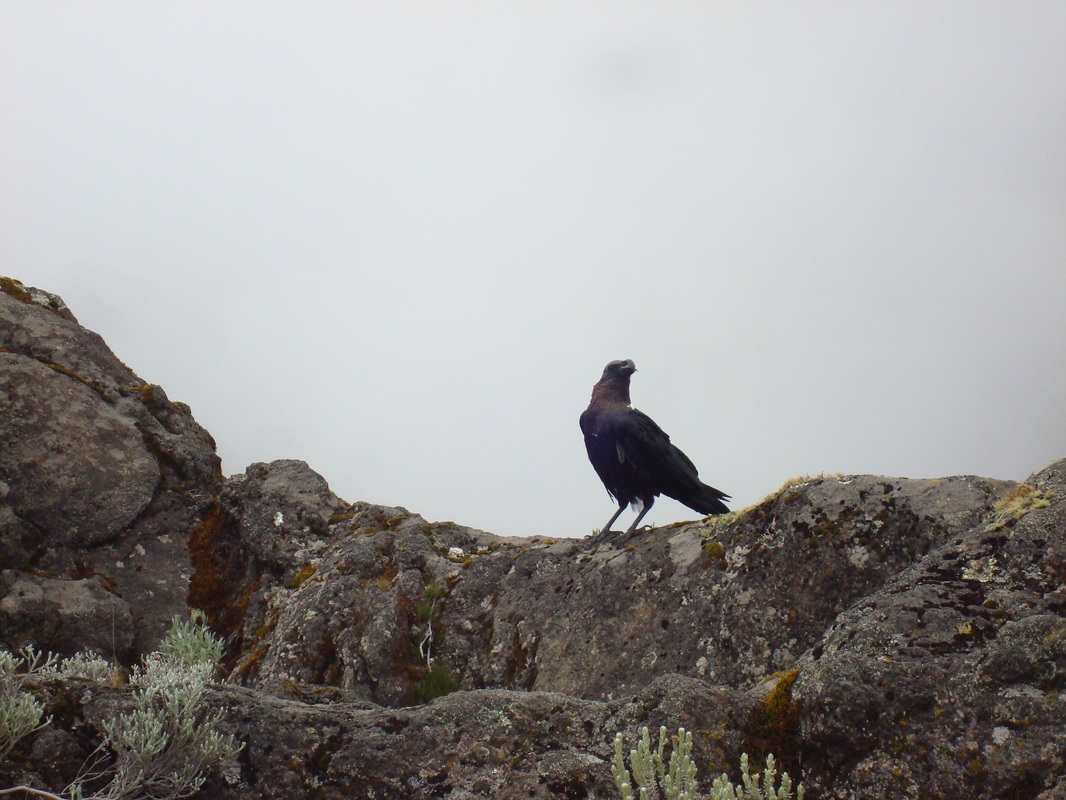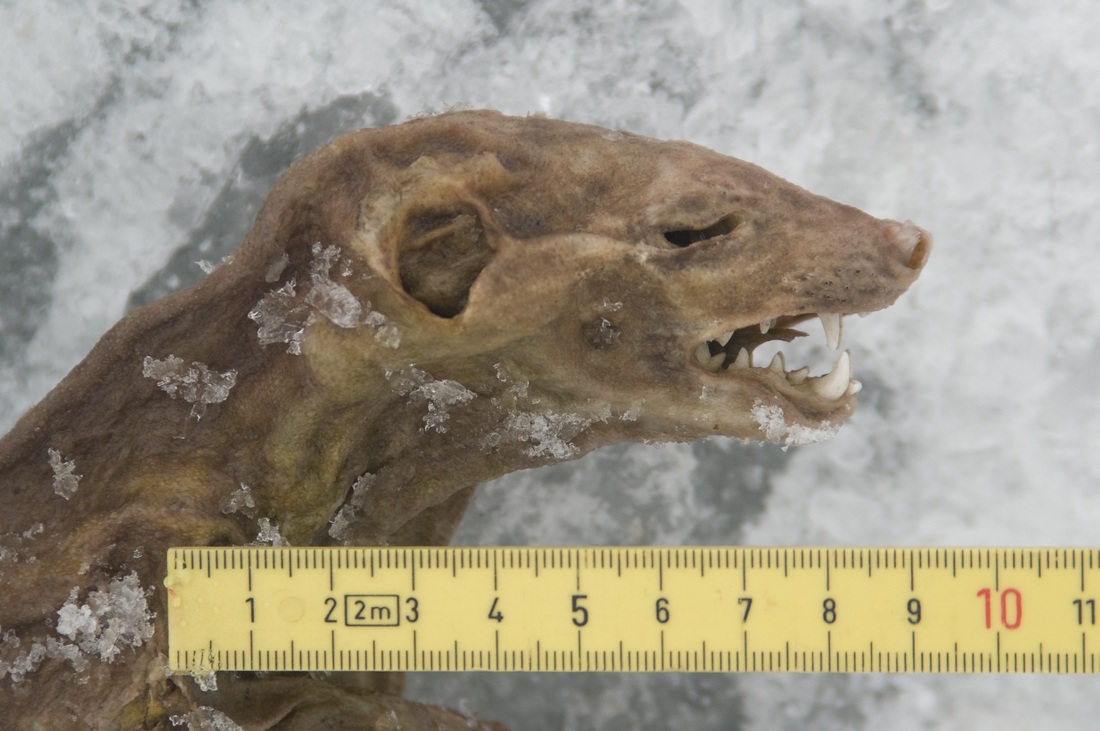Grant Mooney Searches for Wildlife on Mt. Kilimanjaro
ASC adventurer, Grant Mooney, recently summited Mount Kilimanjaro, Africa’s highest mountain, and collected animal observations for UMass Amherst Senior Research Fellow, Doug Hardy. Dr. Hardy, a specialist in climate and glaciers, is looking for evidence of mammals and birds at high elevations (above 13,000 ft) of Kilimanjaro. He plans to use radiocarbon dating on frozen remains of animals in order to more accurately estimate the age of Kilimanjaro’s ice.
As Mooney ascended the 19,341-foot Tanzanian mountain, he used his GPS to mark the altitude and coordinates of the animals he spotted. He observed 15 to 20 birds and small rodents at high altitudes, including a mouse at the 17,000-foot mark. Most of the animals Mooney saw were scavengers, such as white napped ravens, which he assumed traveled to high elevations to feed on the scraps left behind by climbers.
As Mooney ascended the 19,341-foot Tanzanian mountain, he used his GPS to mark the altitude and coordinates of the animals he spotted. He observed 15 to 20 birds and small rodents at high altitudes, including a mouse at the 17,000-foot mark. Most of the animals Mooney saw were scavengers, such as white napped ravens, which he assumed traveled to high elevations to feed on the scraps left behind by climbers.
Mooney, an economic and business analyst for the International Trade Administration, jumped on the opportunity to climb Kilimanjaro. Although the climbing route they took, Machame, is not considered a technical climb, the high elevation demands extreme physical fitness. Mooney, who had never previously climbed in such high altitudes, described the expedition as “long and intense” but “manageable.”
“Working with ASC and Dr. Hardy made both me and my group aware of the effects that this glacier has, not only on Africa and the world, but also on the local communities that depend on it for fresh water,” said Mooney.
He added, “The ice fields on Kilimanjaro will disappear at some point. Water will disappear for the surrounding native populations.”
Mount Kilimanjaro gained global attention in the early 2000s when environmental scientists predicted that its glaciers would completely recede by 2015. Scientists now believe the ice has another 10-50 more years until it vanishes.
“Working with ASC and Dr. Hardy made both me and my group aware of the effects that this glacier has, not only on Africa and the world, but also on the local communities that depend on it for fresh water,” said Mooney.
He added, “The ice fields on Kilimanjaro will disappear at some point. Water will disappear for the surrounding native populations.”
Mount Kilimanjaro gained global attention in the early 2000s when environmental scientists predicted that its glaciers would completely recede by 2015. Scientists now believe the ice has another 10-50 more years until it vanishes.
Despite the uncertainty of these predictions, one fact remains clear – and precarious – “Of the ice cover present [on Kilimanjaro] in 1912, 85% has disappeared and 26% of that present in 2000 is now gone…The combination of processes driving the current shrinking and thinning of Kilimanjaro’s ice fields is unique within an 11,700-year perspective.”
Dr. Hardy, who has been studying Kilimanjaro’s glaciers and weather since 2000, considers ASC a “fascinating opportunity to involve citizen science.”
He continued, “There are already so many climbers on the mountain. If we can get them to make simple observations, we can gain a better understanding of the relative abundance of the animals up there, where they hang out, and how the climate has changed over time.”
Dr. Hardy, who has been studying Kilimanjaro’s glaciers and weather since 2000, considers ASC a “fascinating opportunity to involve citizen science.”
He continued, “There are already so many climbers on the mountain. If we can get them to make simple observations, we can gain a better understanding of the relative abundance of the animals up there, where they hang out, and how the climate has changed over time.”
– P.J. Hoffman




